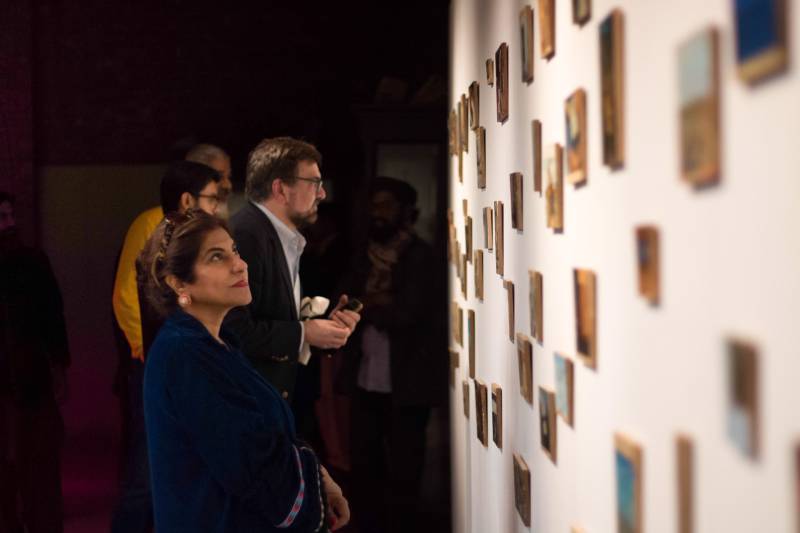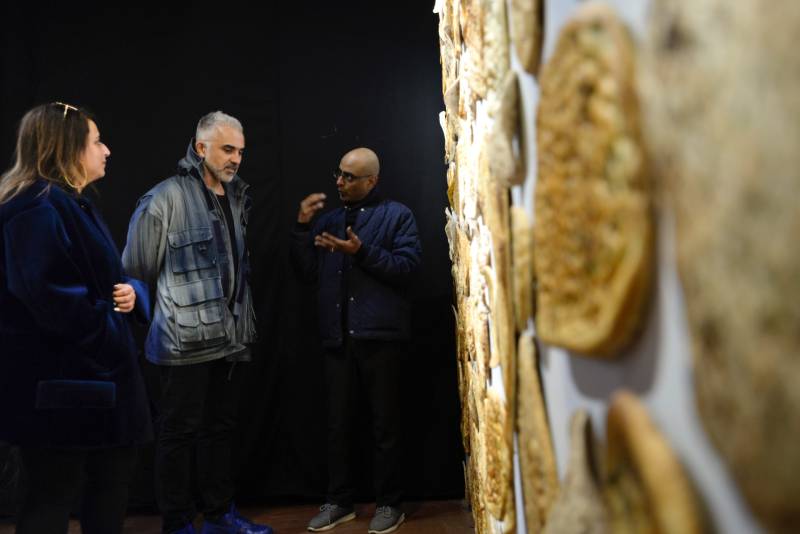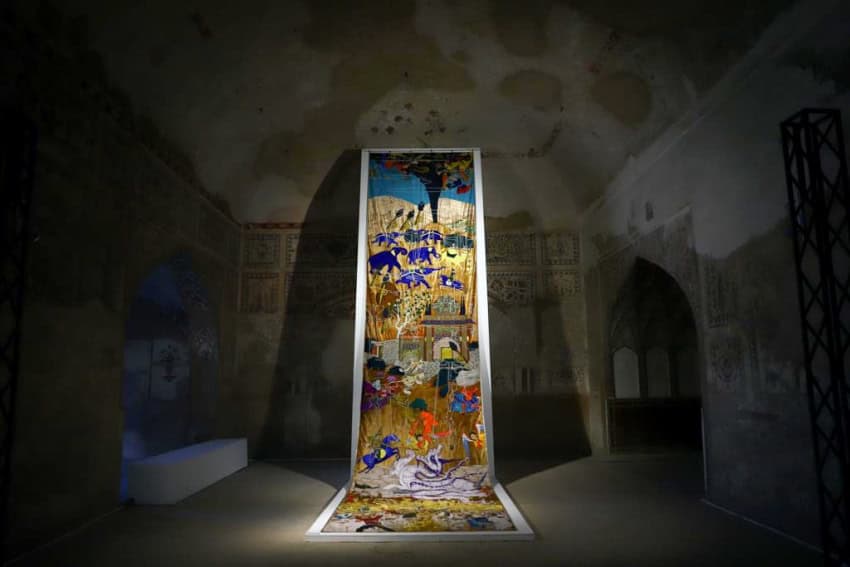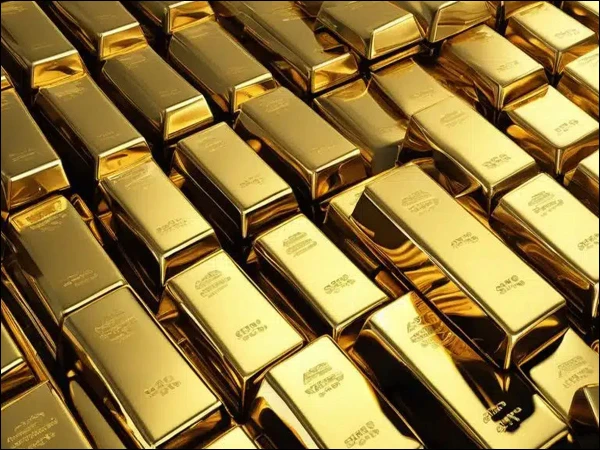From its cultural zenith in the days of Akbar, Lahore has remained a major centre of knowledge and creativity in South Asia. As a free-spirited city that was home to the Mayo School — among other great institutions of knowledge — Lahore fed the imaginations of artists, poets, and writers, from B.C. Sanyal, Amrita Shergil, and Chughtai, to Faiz, Manto, and Khushwant Singh. But in the decades following Ayub’s martial law, as the space for arts and humanities diminished in Pakistan’s public discourse, so too did Lahore’s claim of being a vibrant cultural capital.
In recent years, events like the Lahore Literary Festival (LLF) and the Lahore Biennale have sought to reclaim Lahore’s historical place on the international arts calendar. The first Lahore Biennale (LB01) took place for a fortnight in March 2018, displaying works by artists from 11 countries and attracting over a million visitors, and the second Lahore Biennale recently opened its doors to the public on January 26, 2020.

Between the Sun and the Moon
The Second Edition of the Biennale (LB02) is significantly larger in scale and ambition, spanning 11 major sites over 5 weeks — and hopes to attract over three million visitors. LB02 sites include Mubarik Haveli, Summer Palace and Diwan e Aam in the Lahore Fort, Tollinton Market Museum, the National College of Arts, the Punjab Irrigation Department, the Punjab University College of Art & Design, Punjab Library, Bradlaugh Hall, the Punjab Institute of Languages and Culture (PILAC), Alhamra Cultural Complex, Gaddafi Stadium, and Pak Tea House.
Titled Between the Sun and the Moon and curated by Hoor al-Qasimi, Director of the Sharjah Art Foundation and one of the art world’s most respected curators, LB02 aims to reconnect the Global South, bringing together more than 70 artists from over 40 countries. In the process, it will help restore Lahore’s historic role as an international centre for arts and culture. In conjunction with the Biennale, the prestigious International Biennale Association (IBA) held its board meeting in the city for the first time.

Revitalizing Heritage Sites
The Lahore Biennale Foundation (LBF), which organizes the Biennale under the patronage of the Punjab Government, has worked closely with the guidance of the Walled City of Lahore Authority (WCLA) and the Aga Khan Trust for Culture (AKTC) to ensure that heritage sites can be revitalized in the public imagination while being fully preserved and protected.
Bradlaugh Hall, an LB02 site, is one such forgotten cultural gem that the Biennale hopes to bring back to life as a public art space. Named after Sir Charles Bradlaugh, a British MP who famously supported self-rule for the people of the sub-continent, Bradlaugh Hall hosted fiery speeches by pro-independence activists, including Maulana Barkat Ali, Mian Iftikharuddin, Allama Muhammad Iqbal, and Quaid-e-Azam Muhammad Ali Jinnah.
The PIA Planetarium, another overlooked treasure, has been completely revamped to house site-specific works, including a stunningly futuristic 360-degree digital projection by Kazakh artist Almagul Menlabayeva that is inspired by the Timurid astronomer Ulugh Bek and explores cosmology through the ages. Similarly, the main hall at the Punjab University College of Art & Design has also been restored to its former glory to house a beautifully curated display of works by a diverse group of artists.

Connecting the Global Arts Community
The power of arts and culture as moderating forces and a cohesive bond for diverse societies is well-recognized. However, their potential as a catalyst for economic growth is less explored, particularly in developing countries. In developed economies like the United States, the creative arts and related activities constitute 4% of GDP — larger than the agriculture, transport, and warehousing sectors. Closer to home, the Kochi Biennale in India and the Dhaka Art Summit in Bangladesh, both established in 2012, have led to double-digit growth in art exports from the two countries. Similarly, Pakistan’s biennales hope to spur urban renewal, bring in cultural tourism, promote the country’s soft image, and support the growth of galleries, museums, and other cultural spaces.
By providing an international platform in Lahore for the arts, LB02 hopes to celebrate the immense creativity of its artists, help make connections with the global community of artists and art-lovers, and in doing so, create new avenues of growth and renewal for Lahore. For the city that was once the cultural capital of the Mughal Empire, efforts like the biennale are not just a fitting tribute to its past, but a powerful engine for the city’s future growth.














